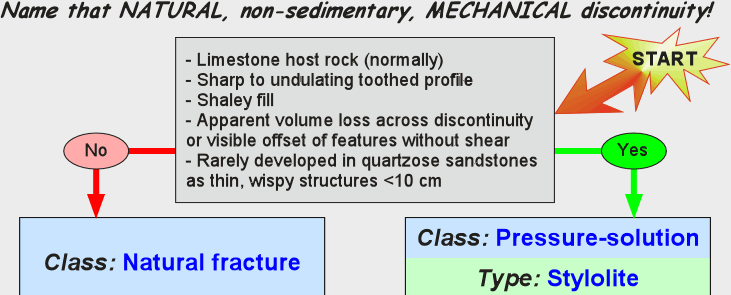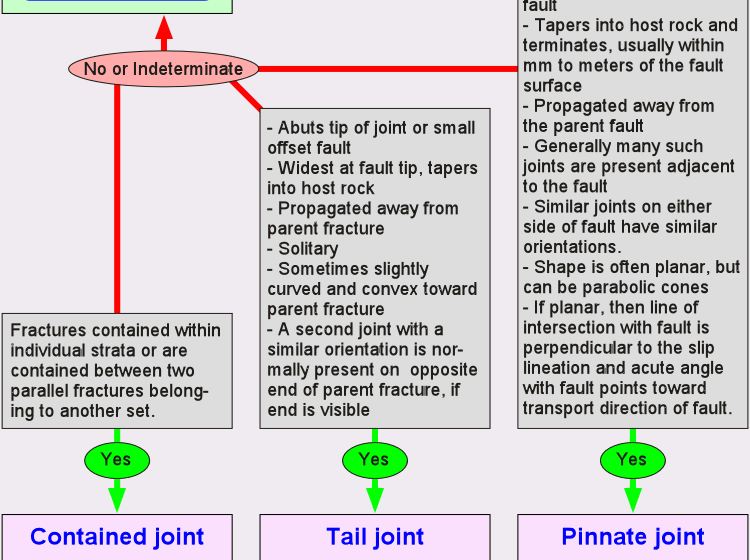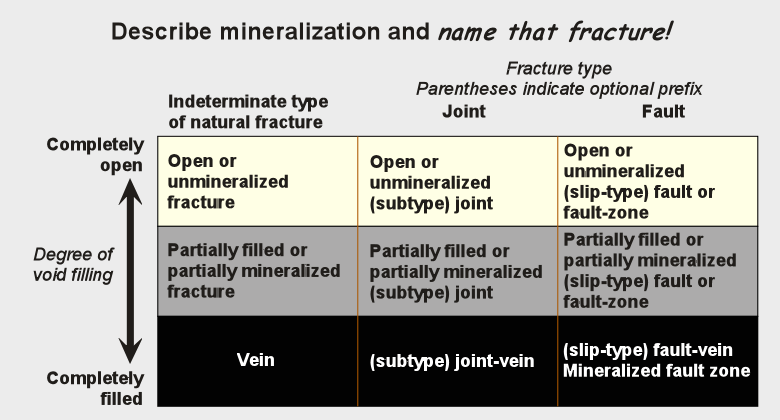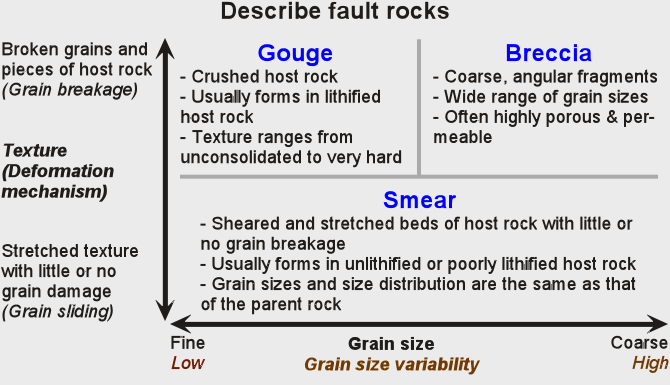Fracture Identification Flow-Chart
|
The following series of nested charts will help you identify and describe the different types of natural
rock fractures. Lists of criteria for identifying features (boxes) include criteria that are available in
image logs and/or core and/or outcrop. All of these features except slickolites and tail joints are identified
in image logs under favorable circumstances, however compaction and deformation bands cannot be
differentiated from each other in image logs.
To identify and describe a fracture, work through the flowchart from the
beginning. Each chart leads to a box that contains a button outlined
in blue. Click on the button
outlined in blue to go to the next step
in the process of classifying and describing the fracture. |
 |
||||
 |
||
 |
||
 |
 |
 |
| Describe a stylolite or slickolite | |
In image logs, core or outcrop record the following:
Return to START to classify and describe another fracture. |
 |
||
 |
||
 |
||
 |
||
| Describe a natural fracture. | |
In image logs, core or outcrop record the following:
|

| Describe a compaction band. | |
In image logs, core or outcrop record the following:
This completes description of a compaction band. Return to START to classify and describe another fracture. |
Chart 4: Joints
 |
||
 |
||
 |
 |
 |
| Describe a joint | |
|
In image logs, core or outcrop record the following: All joints:
Contained joints
|

Chart 5A: Faults
 |
||
 |
||
 |
 |
 |
| Describe a fault or fault zone | |
|
Describing a fault is a four-part process: Step 1: Name the fault type based on the slip-sense and slip-direction Step 2: If your fault is a fault zone, then describe the fault-rocks Step 3: Record the key characteristics Step 4: Describe the mineral fill |
|
| Fault description - Step 1: Name the fault type based on the slip-sense and slip-direction. | |
At this point, you should name your fault either:
|
|
| Fault description - Step 2: |
|
Fault description - Step 3: Record the key characteristics. |
|
|
In image logs, core or outcrop record the following: All faults:
|
|
Fault description - Step 4 |
|

|
| Describe the mineralization | |
| Describing the mineral fill, or the lack of it, is the last step in classifying and naming a rock fracture. Classify the fill type and name your fracture. Void in fault rocks become mineralized just like the void spaces in open fractures. Examples of fracture names follow the table. Note that deformation bands and compaction bands have very little porosity (<3%) and no large voids so that any cement or mineral fill is not readily visible and isn't described. |

Here's some examples of fracture names:
|
Return to START to classify and describe another fracture.
Copyright © 2000 - 2017 • Alfred Lacazette • All Rights Reserved
